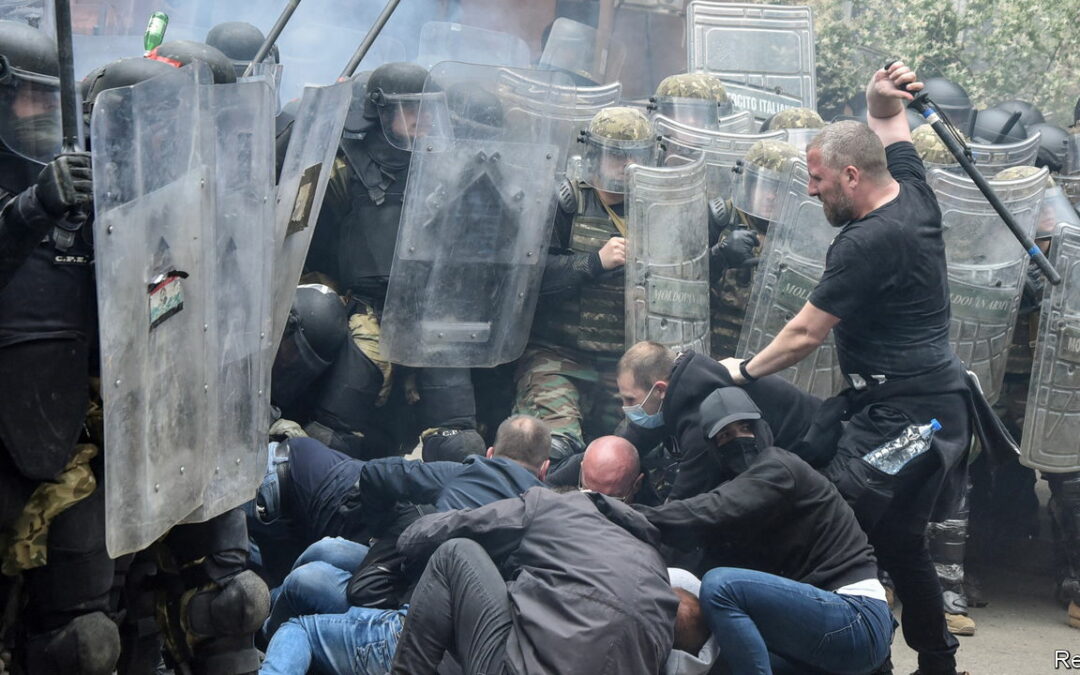ON MAY 29TH, when a Serb mob attacked NATO troops guarding a town hall in Zvecan in northern Kosovo, alarms sounded in the chancelleries of Europe and in Washington. At least 80 people were hurt, including 30 NATO peacekeepers. By the next day the mob had vanished. But disaster was only narrowly averted: if NATO troops had killed any of the Serbs, the situation would have quickly turned from a nasty scuffle in a Balkan backwater to an incident that Russia and its bots would have exploited, accusing the peacekeepers of killing unarmed civilians. (In fact, the men responsible for the attack were armed and almost certainly belonged to an organised group.) Violence in Kosovo can escalate quickly. Why is the country so fractious, and what prompted the latest unrest?
Until the violent break-up of Yugoslavia in the 1990s, Kosovo was part of the country—not as a republic within the federation, but a province of Serbia. Today, for that reason, Serbia’s leaders argue that Kosovo has no right to the independence it declared in 2008. But by then Serbia could do nothing to stop it. Serbia’s rule over Kosovo was forcibly ended in 1999, when NATO intervened to stop fighting between Serbian security forces and ethnic-Albanian guerrillas. It was then administered by the UN.
Kosovo’s population is overwhelmingly ethnic Albanian. Only around 5% of its 1.8m people are Serbs; half of them live in the north of the country, where almost no Albanians live. Kosovo’s Serbs reject the country’s independence. Since 1999 Serbia proper has run a parallel administration in Kosovo’s Serb-dominated north, including a shadowy police-cum-security-service. This force is involved with criminal networks, which thrive doing business with their Kosovo-Albanian counterparts.
In 2013 the governments of Serbia and Kosovo struck a co-operation deal. One part foresaw the granting of some form of autonomy to Serbian majority municipalities in Kosovo, including the four in the north. But this never happened. In 2015 Kosovo’s constitutional court ruled that the plan was “not entirely in compliance with the spirit of the constitution”. When he was in opposition Albin Kurti, Kosovo’s current prime minister, campaigned against it.
Since the Russian invasion of Ukraine last February, America and the EU have pushed Serbia and Kosovo to strike a new deal. But crises in Kosovo’s north keep flaring up. In November Kosovo Serbs resigned from all official positions, including in the northern municipalities; the proximate cause was a row about the use of Serbian car number plates but this was just the latest in a series of quarrels.
New elections were held in the north in April this year but Serbs boycotted them, meaning that Albanian mayors were elected by just a few hundred Albanians who live in the region. The vote was legal, but the mayors have little legitimacy and will be unable to do their jobs without the co-operation of Serbs who work in the town halls and run municipal services. Western diplomats asked Mr Kurti not to inflame the situation. But he ignored them, sending special police units to take control of the town halls on May 26th, predictably provoking protests.
Mr Kurti’s actions have enraged Kosovo’s Western backers. But Aleksandar Vucic, Serbia’s leader, is in no position to capitalise on the situation. His refusal to join the West’s sanctions on Russia has lost him goodwill, and he is facing big anti-government demonstrations at home. The main Kosovo-Serb party is a subsidiary of his Serbian Progressive Party, but many Kosovo Serbs have lost faith in it. Instead, they see themselves as victims of political games played between Serbian and Kosovo-Albanian leaders. In March, under pressure from the West, Mr Kurti and Mr Vucic struck a fresh deal that included a renewed pledge to form a Kosovo-Serb association of municipalities. But the two men loathe one another, and there is no evidence that they have much political will to make the agreement stick. The period of frequent flare-ups is not yet over. ■









